There’s a reason why national superbike grids around the world are stacked with Suzuki GSX-R1000s. With 37 championships in the past 10 years, the pedigree and performance potential of the venerable Gixxer speaks for itself. Making up at least 45% of the AMA Superbike field since 2009, the GSX-R has a reputation for winning. Of course, just when you think it can’t get any better, it always does. Introducing the 2012 Suzuki GSX-R1000.
At first glance, the new GSX-R looks pretty similar to the outgoing model. It still has a funky trapezoidal headlight, familiar lines and the distinctive blue and white color scheme. According to Suzuki, the 2012 model is a “refined version of the fifth generation.” Perhaps the first thing visually different is the single exhaust that replaces the twin exhaust setup of the 2011 version. Another visually obvious change is a switch to Brembo monobloc calipers (in gold to separate them from its silver 600/750 brethren) and red pinstriping around each wheel.
Leaner and Meaner
Along with the switch to the single muffler design this year, the under-engine chamber is also gone. The 4-2-1 stainless steel exhaust gains a little pipe length before meeting with the titanium exhaust canister. Following these outward updates the remaining changes come from within, focusing primarily on the engine, but also on the chassis. The design goals for the new engine include reducing weight, improving low- and mid-range torque, better throttle response and higher fuel mileage. Interestingly, though, Suzuki didn’t highlight increased peak power as an objective for the new mill.
Using finite-element-method (FEM) and fatigue-analysis techniques borrowed directly from MotoGP, the new GSX-R’s pistons are 11% lighter and yield a slightly higher compression ratio of 12.9:1 (from 12.8:1).To help the engine breathe better and reduce pumping losses, pentagonal crankcase vents replace the box-shaped vents seen on the previous model.
New camshaft profiles include slightly more lift on the exhaust side, and valve-overlap duration has been shortened a smidge as well. The four-valve-per-cylinder layout is retained with the valves still made from titanium. The revised cam profiles along with the retuned exhaust and subsequent ECU recalibration is said to give the newly updated GSX-R1000 engine a broader torque curve than before without losing any of the top-end hit from the previous model.
Next, the chassis got the Jenny Craig treatment. As mentioned earlier, the 2012 Gixxer ditches the extra exhaust canister it had a year ago, reducing the overall width 15mm to 705mm (27.8 inches) while also losing a significant amount of weight.
The new Brembo calipers are lighter than the outgoing Tokico calipers as well, but also provide more positive braking power and feel, not only because of their construction, but also due to slightly larger caliper pistons. Rotor thickness is scaled back to 5.0mm from 5.5mm in order to reduce unsprung weight, but rotor diameter stays the same at 310mm. All told, the new GSX-R1000 is 4.4 pounds lighter than last year.
Bump absorption comes from Showa’s Big Piston Fork that sees a few tweaks this year. The new forks are 7mm shorter in length, with a 5mm reduction in stroke. Suspension settings are accordingly softened to accommodate the bike’s weight loss. Out back, the same fully adjustable shock from the previous model is carried over without any changes.
Other odds and ends include a new arrangement for the front axle that now utilizes an outer thread and nut, rather than the hollow bolt and inner thread used previously. Not only does this eliminate the need for a special tool to take wheels off, it also sheds 39 grams. Seat height remains the same at 31.9 inches, but the seat’s now covered in a grippier material to keep the rider from sliding around unintentionally.
What About T/C?
After reviewing all the improvements to the new GSX-R1000, one glaring omission from the list is traction control. The latest trend in sportbikes these days is equipping a motorcycle with T/C from the factory; it’s like a right of passage in the eyes of the general consumer. With the amount of power today’s literbikes put out, surely an electronic safety net is needed to protect riders from themselves, right?
Suzuki doesn’t think so. Its philosophy is to engineer a motorcycle with handling characteristics that will communicate to the rider and warn them if the rear is spinning. Like Honda and its CBR1000RR, Suzuki’s stance on T/C isn’t to simply incorporate the system just because its competitors are doing so. It’s definitely a technology being researched (and surely being developed behind closed doors), but we’ll have to wait for a future model before we see it in production.
Own The Racetrack
To see if its newest creation lives up to its “Own The Racetrack” tagline, Suzuki invited journalists to Homestead-Miami Speedway in Florida to put the new GSX-R1000 through its paces. We were greeted with gloomy weather and under constant threat of rain. Rain tires weren’t needed, but the standard Bridgestone Battlax Hypersport S20 tires were replaced with the more track-oriented Racing R10. Front tire size remained the same, but the rear 190/50-17 S20 was substituted for a 190/55-17 R10.
Sitting on the new GSX-R feels instantly familiar to all the GSX-R models I’ve ridden in the past. You sit “in” rather than “on” the Suzuki. Immediately noticeable once the new G1K is rolling is the bump in low-end power. Homestead’s infield layout consists mainly of slow- to medium-speed bends that lead to sizable straights, and squirting out of these turns on the new Suzuki reveals the increase in grunt within the engine.
I’ll admit to being suspicious when told why traction control was missing from the GSX-R. With a host of electronics already equipped, including the Suzuki Drive Mode Selector system, I figured adding T/C would be a natural next step. Excuses or not, the connection between throttle and rear tire is superb, as the sometimes-damp conditions would cause the rear to spin when accelerating. It was never an issue, however, and controlling the slide was a simple matter of modulating the right wrist.
While this latest GSX-R1000 continues Suzuki’s evolution of refinement, unfortunately this wasn’t reflected in the gearbox – shifting was notchy and harsh at times. Deliberate pressure on the shifter during clutchless upshifts was crucial to a successful gear change. Gearing felt tall for this particular track, as rarely did I need more than third gear, even on the oval portion of the track, though this is more an indication of just how powerful modern literbikes have become.
Braking power from the new Brembo monoblocs is everything we’ve come to expect from the brand. Monstrous stopping ability is a simple matter of squeezing the lever harder. Modulation was equally impressive, making it easy to trail-brake right to the apex.
Thanks to the Big Piston Fork, composure under braking was equally excellent. After that, however, finding confidence in the front end was a struggle. The changing weather conditions or the concrete patches in every turn could be partially to blame, but it was an issue I heard other journalists also mumbling about. Having not ridden its predecessor for some time, it’s hard to judge the new Gixxer’s flickability, though it does feel on par with the rest of its Japanese contemporaries in this department.
Still King of Sportbikes?
Some might wonder if Suzuki has done enough to surpass its competition both in the dealership and the racetrack. With a price-point set at $13,799, $200 more than the 2011 version, equal to the 2012 Honda CBR1000RR, and $200 less than the traction-control-equipped Kawasaki ZX-10R andYamaha YZF-R1, Suzuki has placed the new GSX-R right in contention. With bottom-end power close to that of the Honda — and similar front ends — the battle between the two will be tight.
One thing the Suzuki has on its side is its popularity in the aftermarket world. Virtually any performance part or accessory is available for every GSX-R, giving you the ability to customize it to your liking. In addition, Suzuki is making it more attractive than ever to buy one of its motorcycles, scooters or ATVs, regardless of model year, with an industry-leading 0% finance offer for five years, for all regular tiers through March 31, 2012. Additionally, select models, including the GSX-R, are also eligible for $1000 off through March 31st.
With deals like that, the new GSX-R might have success in the sales wars, but there’s only one way to know if it will “Own the Racetrack.” We’ve been plotting our 2012 literbike shootout, and over the next few weeks we’ll pit all of the major contenders, including the GSX-R1000, against each other for both street and track superiority. It promises to be an epic test and one that’s not to be missed. Stay tuned.
If you’d like to see the new Gixxer in action, check back with us next week to see our upcoming video.
Related Reading
2012 Honda CBR1000RR Review
2012 KTM RC8 R and RC8 R Race Spec Review: First Ride
2012 BMW S1000RR Review
2012 Yamaha YZF-R1 Review
2011 Kawasaki ZX-10R vs. 2011 BMW S1000RR Shootout Street
2011 Kawasaki ZX-10R vs. 2011 BMW S1000RR Shootout Track
2011 Aprilia RSV4 Factory APRC SE Review
2011 Kawasaki ZX-10R Review
 8:22 AM
8:22 AM
 Chiken Joe
Chiken Joe


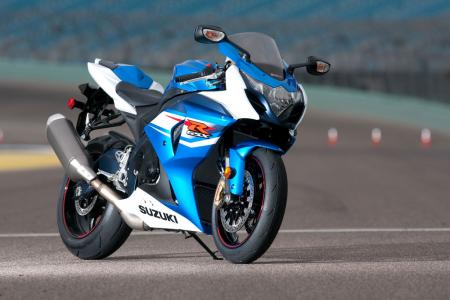
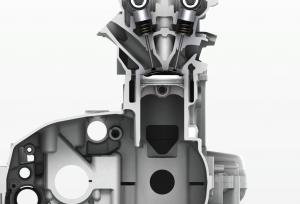
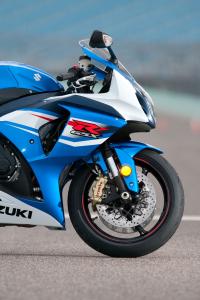
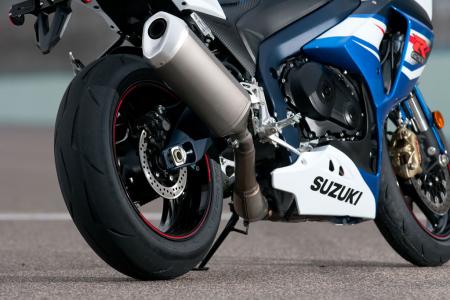
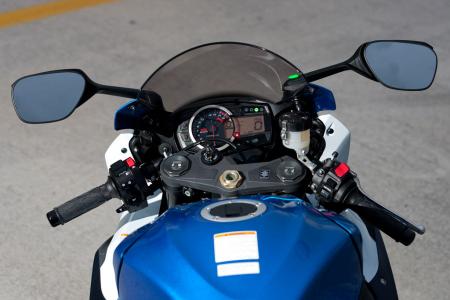
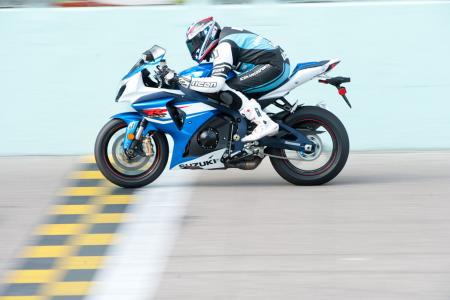
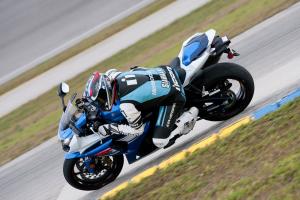
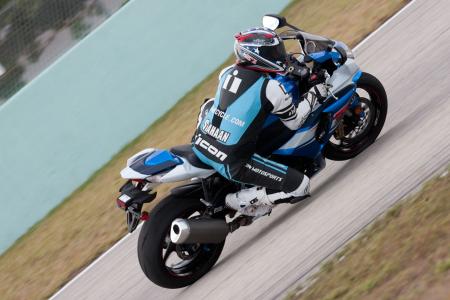

 Posted in:
Posted in: 







0 comments:
Post a Comment